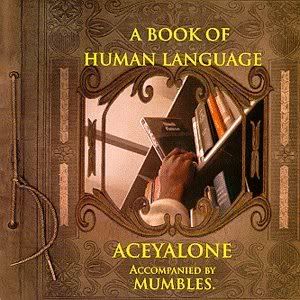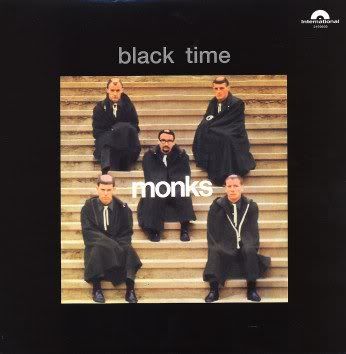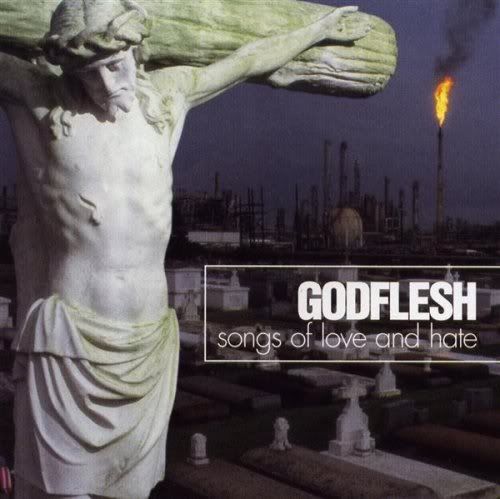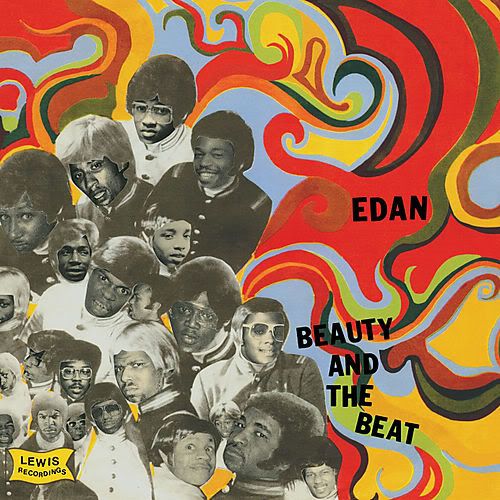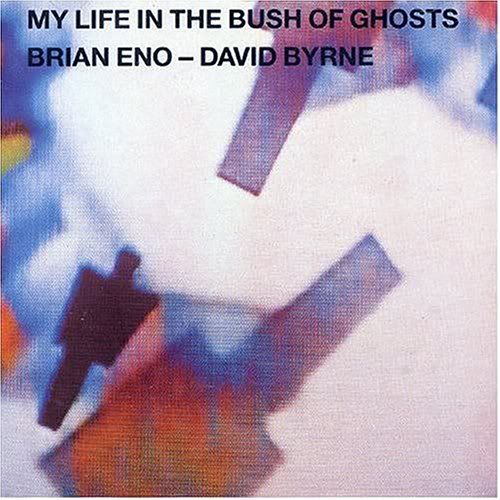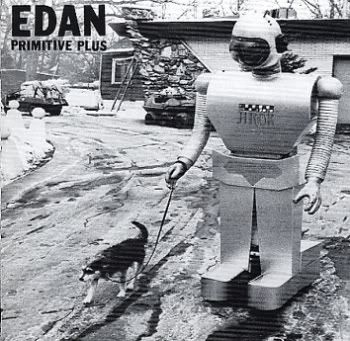Acey’s “A Book Of Human Language” is some next level some. Lush, dark and genius.
Edan is a don. His two albums are from a different planet. The man is fucking hilarious and a SUPERB producer.
My Life In The Bush Of Ghosts by Byrne & Eno is ESSENTIAL!! A phenomenal fusion of beats & wild samples recorded in 1981 and still sounds just as fresh and deadly today as it did then.
Below are info on the albums…
Edan “Beauty & The Beat”
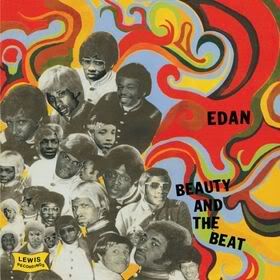
Edan is quite the character: With him, it’s either “Sing it, shitface” or an exercise in hip-hop erudition, as heard on his Fast Rap mixtape. Which is why one never knows what to expect from his recorded output. His debut LP, Primitive Plus, mixed the retarded with the ingenious; it was an entertaining album in a backpacker era that was more often redundant than refreshing. So, when photos of the newly hirsute Edan emerged and rumors of a “rock” record made the rounds, it became easy to imagine a Derek/Biggie Smalls concept album replete with irony and wankery. This record is no joke. Having established himself as a ruthless wit and tireless scholar of rap, Edan makes the leap to “serious artist” on Beauty and the Beat, exhibiting an auteurism that places him level with his predecessors instead of prostrate before them.
On lead single “I See Colours”, Edan declares, “Prince Paul already used this loop/ But I’ma keep it movin’/ And put you up on the scoop.” The lyric is a synopsis of Edan’s new outlook. Yes, it’s been done before, but not like this. The song is his epiphany over a 60s jangle and mushrooming Moog effects. Like a master mathematician who suddenly sees the pattern in the formula, Edan commences his solution.
One more time before he blows your mind, Edan pays respects to the “true scientists”. “Fumbling Over Words That Rhyme” is a timeline of the forgotten founders. True, many of the names he drops are familiar, but-- as many of the mentioned could tell you-- respect is the only restitution to them. Over a runaway break, Edan pays dues to the Fatback Band on up, providing a syllabus for future pupils.
The nightmarish diptych of “Murder Mystery” and “Torture Chamber”-- the latter featuring Percee P’s lyrical conveyor belt over the churning bass-line from Pink Floyd’s “On the Run”-- bleeds into “Making Planets”, an organ dirge backing Edan’s laidback braggadocio that changes gears into a Crazy Horse-ish Mr. Lif conspiracy theory. Each song transitions to the next through the ever-present Moog noodlings and shared elements, an effort at a hip-hop long-player and not simply a collection of singles.
“Rock and Roll” applies Black Sabbath, Velvet Underground, and Talking Heads to create a psychedelic ode to its titular genre, and “Science of the Two” is a tangled mass of Edan and Insight that rivals Run-DMC for seamless vocal interplay.
On the latter half of the album, “Beauty”, “Smile”, and “Promised Land” are three sample-packed masterpieces that compress the time between '68 and '88. Reversed drum loops, found sounds, droning feedback, Echoplexed vocals, syrupy strings, and truckloads of bubbling Moog intermingle with Edan’s Kane-with-a-cold mic skills to astonishing effect.
The gravity of Edan’s lyrics and voice on Beauty and the Beat is perhaps its most surprising element. He’s gone from a brainiac prankster to the Borges of rap. Even his battle rhymes have a surrealist bent. He doesn’t wear watches by Jacob. He “wears the Time Meridian as a wristband.” He doesn’t grace stages. He “does the show on a fireball.” He doesn’t wear his own clothing line. He “put a nameplate on a asteroid belt.”
Edan satirizes the narcissism of hip-hop by being so out-there narcissistic that someone would basically have to say, “I’m the best MC times infinity” to compete. But it’s more than just his otherworldly assertions. Nearly every bar is a saturated image of his subconscious put on display to ponder its meaning. Some of it may just be nonsense but most if it is resonant. His lyrical inventiveness and idiosyncratic metaphors place him in a category populated by few.
Edan is hip-hop, without a doubt. But he’s the hip-hop that appeared in the suburbs in the late-80’s and shared time with metal and indie rock, when MTV’s weekend line-up was “Yo!MTVRaps”, “120 Minutes”, and “Headbangers Ball”, with Public Enemy likely to find time on all three. Beauty and the Beat sounds like a record made by someone who once devoured the catalog and history of his favorite artists, traced their lineage as far back as he could, and has discovered his place in the genealogy. With that enlightenment, Edan is no longer an impersonation of his idols, but one of their peers.
— Peter Macia, April 18, 2005
Edan “Primitive Plus”
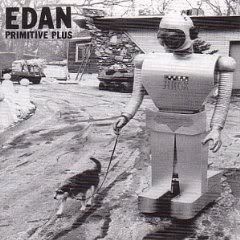
Let’s face it: those retro-back in the days all was better-I got that early King Sun record type purists are geeks. And the journalists are the commanders of the squad. That’s why we like Edan, who’s like our minister of music, him being responsible for some of the best music that should have come out twenty years ago. And today, we’d gladly pick it up as our national anthems. It however took Edan a minute to get his music available for a wider audience, as his music was only available on 12"es (like the ‘try to find it now’ “Sing It Shitface” 12" on Buiscuithead) and CD-R’s. With the good people of Lewis Records now releasing this album, we shall position ourselves in our b-boy stance and get as excited like white trash on a discount night at the one dollar store.
Getting back to our geek discussion though: if Edan really is (attention: a journalistic music genre label coming up) doing Geek Rap or something, then the universe is being flipped over like the magnetic direction on this good old planet in about twenty eight years (and be warned: it will bring turmoil and destruction). Cause this nerdy kid is sounding too damn cool. And he’s blatantly elitist, when he starts talking about the masters on “Syllable Practice (Original)”, or when he’s name dropping on “#1 Hit Record” that also features the memorable line: “the flyest on a 12” / so is a girl and she doesn’t make records". He then goes for the reality show, when he’s mockingly restaging a conversation between two fellow geeks on “Ultra '88 (Tribute)”, to later mimicking Kool Keith rather excellently. Or check out the “Sing It Shitface” 12" cut “Migraine” that reappears on here as the ‘Almighty Dust Mix’, that speeds up things, giving a nod to a “Men At Work” or “Let The Rhythm Hit 'Em”.
Looking for what could be enjoyed by someone who owns the second UMC’s album, as well as by a tolerant rap fan who thinks that hip hop started with Snoop, then there are the more straight forward “Rapperfection” featuring Mr. Lif that’s getting harsh on your arse though. And if that’s not your kind of stimulation, then there’s “Mic Manipulator”, that’s a playful little diddy, with Edan flowing about his skills, skilling about his flows and illing about his hoes, or something. He’s then getting even further regular on “Run That Shit!” as we are transported to the best of the early nineties, with the piano, the KRS sample and all that other stuff that’s happening. The lyrics are giving us Edan at his most ignorant, with him stealing lollypops from small children, to then do something nasty that isn’t for the ears of small children (then again, they wouldn’t get it, so sing it to 'em like a lullaby).
By the way, Edan is not just a funny lyricist, proving his humor on cuts like “Emcees Smoke Crack” or the hidden track, he’s also one incredible producer. And not only the opening “'83 Wildin” is showing and proving that. On each cut he’s doing a little something, something, and that usually with a little surprise, one note that just doesn’t really need to be there, like that one bing sound on “Humble Magnificent”, or like the classical music sample he flips on “Key.Bored”.
What only makes it the more tragic, that we’ve got word that Edan isn’t sure if he’ll be able to do another album. The word is, that all these cuts are some years old and were done during one burst of creativity, with him not being sure, if he can get himself in such a creative state again. But man, that’d be a tragic. Like a real tragedy, like Intelligent Hoodlum flipping his style. Wack. At least as wack as “Phantom Menace”.
But yo, dude is a geek, right? And all geniuses are geeks, right? Hence geeks can be geniuses. Hence Edan better be a genius, that only waits for the next inspirational dog to bite him in the buttocks, and the tracks will again flow out of him, like snot during hay fever season (okay that was disgusting). And if not? Man, first put some black shoe laces in your shell toes, walk around with a lowered head for a week or two, buy this record at least once, and cherish it, like it’s your first sex memory and thank the hip hop geek god that you were allowed to hear this.
review: tadah
David Byrne & Brian Eno “My Life In The Bush Of Ghosts” (this is the review for the reissued album with the bonus tracks)

As David Byrne describes in his liner notes, My Life in the Bush of Ghosts placed its bets on serendipity: “It is assumed that I write lyrics (and the accompanying music) for songs because I have something I need to ‘express.’,” he writes. “I find that more often, on the contrary, it is the music and the lyric that trigger the emotion within me rather than the other way around.” Maybe because it’s so obviously the product of trial-and-error experimentation, Bush of Ghosts sounded like a quirky side project on its release in 1981; heck, it didn’t even have any “songs.” But today, Nonesuch has repackaged it as a near-masterpiece, a milestone of sampled music, and a peace summit in the continual West-meets-rest struggle. So we’re supposed to see Bush of Ghosts as a tick on the timeline of important transgressive records.
It mostly holds up to that scrutiny. An album that’s built on serendipity-- on Brian Eno fooling around with a new type of drum machine, on syncing the hook in a tape loop to a chorus, on finding the right horrors on the radio-- can’t score 100%. But even if you cut it some slack, crucial parts of the album don’t sound as intriguing today as they once did-- namely, all of the voices.
The sampled speech from various, mainly religious, sources ties the album into a long and prestigious history of artists who used found sound, which David Toop capably outlines in the liner notes. It’s still the secret sauce that provokes a reaction from the listener. But what reaction you have lies outside of Byrne’s, Eno’s, or your control. On the first half, where the voices are least chopped up, it’s difficult to divorce them from their origins. A couple of tracks read as satire-- “America Is Waiting” sounds like Negativland with a way better rhythm section-- and others as kitsch. “Help Me Somebody” pulls a neat trick by turning a preacher into an r&b; singer, but the exorcist on “The Jezebel Spirit” doesn’t raise as many hairs on the back of my neck now that taping a crazy evangelist has become the art music equivalent of broadcasting crank phone calls. We can’t just hear them for their sound or cadences without digging into the meanings, and not everyone will find the meanings profound.
On the other hand, the rhythm tracks still kick ass 10 ways to Sunday, thanks both to the fly-by apperances of Bill Laswell, Chris Frantz, Prairie Prince, and a half dozen others, and to the inspired messing about of Eno and Byrne as they turned boxes and food tins into percussion. Tape loops are funkier than laptops, and the modern ear is so aware of the digital “noodging” of a sample to a beat that the refreshingly knocked-together arrangements of Bush of Ghosts are a vast improvement. At one stage of the project, they dreamed about documenting the music of a fake foreign culture. They largely pulled it off, and you can tell a lot about this far-off place from its music: It’s a futuristic yet tribal town made of resonant sheets of metal and amplified plastic containers, that the populace has to bang constantly in perfect time to make the traffic move, and the stoves heat up, and the lights flicker on at night, and to coax mismatched couples into making love and breeding new percussionists.
The seven bonus tracks will provoke more arguments than they settle. The setlist of Bush of Ghosts has changed several times over the years, and the diehard fans will still have to swap left-out cuts that aren’t resurrected here; most famously, “Qu’ran”, an apparently sacreligious recording of Koran verses set to music, doesn’t get anywhere near this reissue. The songs that are here include a few that sound almost finished, including “Pitch to Voltage”, and others that would fit almost as well as anything in the second half of the disc. The last cut, “Solo Guitar with Tin Foil”, features someone, presumably Byrne, playing a haunting tune on a guitar with an impossibly clean tone-- a fitting end to an album that, for all its transcontinental fingerprints, sounds strikingly free of impurities.
Though Bush of Ghosts was a link in the chain between Steve Reich and the Bomb Squad, I’m not convinced that this talking point helps us enjoy the album. However, Nonesuch made an interesting move that could help Bush of Ghosts make history all over again: they launched a “remix” website, at www.bush-of-ghosts.com, where any of us can download multitracked versions of two songs, load them up in the editor of our choice, and under a Creative Commons license, do whatever we want with them.
As I write this, the site hasn’t launched, and even if it were up, I can’t tell how lively its community will be, how edgy the remixers can get, and how many rules will pen them in. Nonesuch copped out by posting only part of the album, instead of every piece of tape they owned, and I suspect that the bush-of-ghosts.com site may just be a corporate sandbox for wannabe remixers. But I could be wrong; I haven’t tried to submit my mash-up of “Qu’ran” and Denmark’s National Anthem yet. What matters is that they started the site and released these tracks, and by doing so, they put a stake in the ground-- not the first one, but an important one-- for Creative Commons licensing, Web 2.0 album releases (“this is an album where you participate!”), and the culture of remixing.
And by handing over their multitracks, Byrne and Eno also make a powerful acknowledgement of their own helplessness. It is a basic but real fact of our time that sampling can work both ways. In the 80s, you could fairly make an argument that Byrne and Eno were the Western white men appropriating all kinds of Others, be they domestic and primitive, or foreign and exotic. Now the world can return the favor: Anyone can rip this work apart and use it any way they please, and you can bet that if some kid in the Third World sends a killer remix to the right blogger, it’ll travel faster and farther than this carefully curated reissue. Byrne and Eno counted on a certain amount of serendipity in their studio; today, they can witness the serendipity of what happens to their killer rhythm tracks-- the ones they released, and all the others that people will use anyway. And the strongest message they could send is not only that they’ve relinquished control, but that they admit they already lost it-- whether they like it or not.
— Chris Dahlen, March 23, 2006
